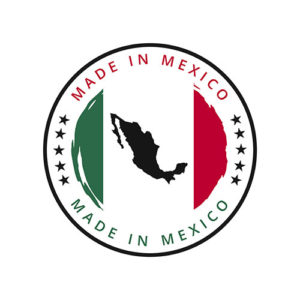The Importance of Supplier Relationships in Manufacturing

The strength and quality of supplier relationships can play a crucial role in a company’s success. For contract manufacturing companies, these relationships are particularly vital, as they impact everything from the reliability of supply chains to cost management and product quality. Effective supplier relationship management is essential for navigating the challenges of manufacturing and ensuring a seamless production process.
In today’s article, we will explore why supplier relationships are so important and how they can drive success in the manufacturing industry.
Ensuring Consistent Quality
One of the primary benefits of strong supplier relationships is the ability to maintain consistent quality in the materials and components used in manufacturing. Reliable suppliers understand your specific quality standards and are committed to meeting them consistently.
This trust ensures that every product leaving the factory meets the desired specifications, reducing the risk of defects and enhancing customer satisfaction. Effective supplier relationship management programs allow manufacturers to set clear quality expectations and continuously monitor and evaluate supplier performance to ensure these standards are met.
Enhancing Supply Chain Efficiency
Effective supplier relationship management streamlines the supply chain, reducing lead times and improving overall efficiency. When manufacturers have a strong rapport with their suppliers, they can rely on timely deliveries and responsive service.
This reliability is especially critical in just-in-time (JIT) manufacturing environments, where delays can halt production and increase costs. By fostering strong supplier relationships, manufacturers can ensure a smooth, uninterrupted flow of materials, thereby enhancing overall supply chain management.
Reducing Costs
Building solid relationships with suppliers can also lead to significant cost savings. Long-term partnerships often result in better pricing terms, bulk discounts, and more favorable payment conditions. Additionally, collaborative relationships enable manufacturers to work closely with suppliers on cost-reduction initiatives, such as identifying more affordable materials or optimizing production processes.
These cost savings can then be passed on to customers or reinvested in the business. Supplier relationship management software can be an invaluable tool in tracking these savings and ensuring that cost-reduction efforts are effective and sustainable.
Driving Innovation

Suppliers can be valuable sources of innovation, offering new technologies, materials, and processes that can give manufacturers a competitive edge. Strong supplier relationships facilitate open communication and collaboration, allowing manufacturers to stay ahead of industry trends and integrate cutting-edge solutions into their operations.
By leveraging supplier expertise, manufacturers can continuously improve their products and processes, driving innovation and growth. Managing supplier relationships effectively ensures that both parties can work together to identify and implement innovative solutions.
Mitigating Risks
In the manufacturing industry, risks such as supply chain disruptions, price volatility, and quality issues are ever-present. Strong supplier relationships can help mitigate these risks by providing a stable and reliable source of materials. Suppliers who are invested in a long-term partnership are more likely to prioritize your needs and work collaboratively to address any challenges that arise.
This proactive approach to risk management ensures greater stability and resilience in the supply chain.
Strategic Suppliers and Managing Supplier Relationships
Identifying and nurturing strategic suppliers is a key component of effective supplier management. Strategic suppliers are those who provide critical materials or services that are essential to the manufacturing process.
By focusing on these key relationships, manufacturers can ensure that they receive the best possible service and support from their most important suppliers. Effective supplier relationship management involves regular communication, performance evaluations, and joint planning sessions to align goals and expectations.
Evaluating Supplier Performance
Regularly evaluating supplier performance is crucial for maintaining high standards and ensuring that suppliers continue to meet the needs of the manufacturing operation. Supplier relationship management programs often include performance metrics and key performance indicators (KPIs) to assess suppliers on various criteria, such as quality, delivery times, cost-effectiveness, and responsiveness.
This ongoing evaluation helps manufacturers identify areas for improvement and work collaboratively with suppliers to address any issues.
Implementing Supplier Relationship Management Software
To enhance supplier relationship management, many manufacturers are turning to supplier relationship management software. This technology enables manufacturers to streamline communication, track performance metrics, and manage contracts more efficiently.
Supplier relationship management software provides a centralized platform where all supplier information is stored, making it easier to monitor and manage supplier relationships. By leveraging this technology, manufacturers can ensure that their supplier management strategies are effective and aligned with their overall business goals.
The Role of Trust and Communication

At the heart of effective supplier relationships is trust and open communication. Building trust with suppliers involves transparency, reliability, and a mutual commitment to shared goals. Regular communication ensures that both parties are aligned and can address any issues promptly.
By fostering a collaborative environment, manufacturers and suppliers can work together to overcome challenges and achieve success, as trust and communication are the foundations of a strong supplier relationship management program.
Achieve a Mutually Beneficial Relationship
For contract manufacturing companies, cultivating strong supplier relationships is essential for achieving operational excellence and long-term success. By ensuring consistent quality, enhancing supply chain efficiency, reducing costs, driving innovation, and mitigating risks, these relationships provide a solid foundation for growth and competitiveness in the manufacturing industry.
Investing in Relationships for Business Success
Investing time and effort in building and maintaining strong supplier relationships is not just a strategic advantage; it’s a necessity in today’s fast-paced and demanding market. Utilizing supplier relationship management software and programs can further enhance these efforts, providing tools and insights to optimize supplier interactions.
If you’re looking to elevate your manufacturing operations, focus on developing robust, collaborative partnerships with your suppliers. The benefits will be well worth the effort, driving your company toward greater efficiency, innovation, and success.
Contract Manufacturing with BF&S
Choosing the right contract manufacturing partner is crucial for the success of your business. BF&S stands out as the ideal choice.
Our commitment to building strong supplier relationships ensures that we deliver the highest quality products, on time and at competitive prices.
By partnering with BF&S, you gain access to a wealth of expertise and innovation, backed by a reliable and efficient supply chain. Ready to take your manufacturing operations to the next level? Visit our website to learn how we can help you achieve excellence in your industry.





 Deciding to outsource your business is not an easy one. It can be an excellent way to add value to your organization. Before your company decides to outsource, remember to ask these questions:
Deciding to outsource your business is not an easy one. It can be an excellent way to add value to your organization. Before your company decides to outsource, remember to ask these questions: